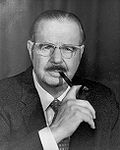This article needs additional citations for verification .(May 2015) |
| 1960 presidential election | |
  Nominees Nixon and Lodge | |
| Convention | |
|---|---|
| Date(s) | July 25–28, 1960 |
| City | Chicago |
| Venue | International Amphitheatre |
| Candidates | |
| Presidential nominee | Richard M. Nixon of California |
| Vice-presidential nominee | Henry C. Lodge Jr. of Massachusetts |


The 1960 Republican National Convention was held in Chicago, Illinois, from July 25 to July 28, 1960, at the International Amphitheatre. It was the 14th and most recent time overall that Chicago hosted the Republican National Convention, more times than any other city.
Contents
- Presidential nomination
- Presidential candidates
- Vice Presidential nomination
- Vice Presidential candidates
- General election
- See also
- References
- External links
The convention nominated then Vice President of the United States Richard Nixon for President of the United States and former Senator Henry Cabot Lodge Jr. of Massachusetts for vice president.

















